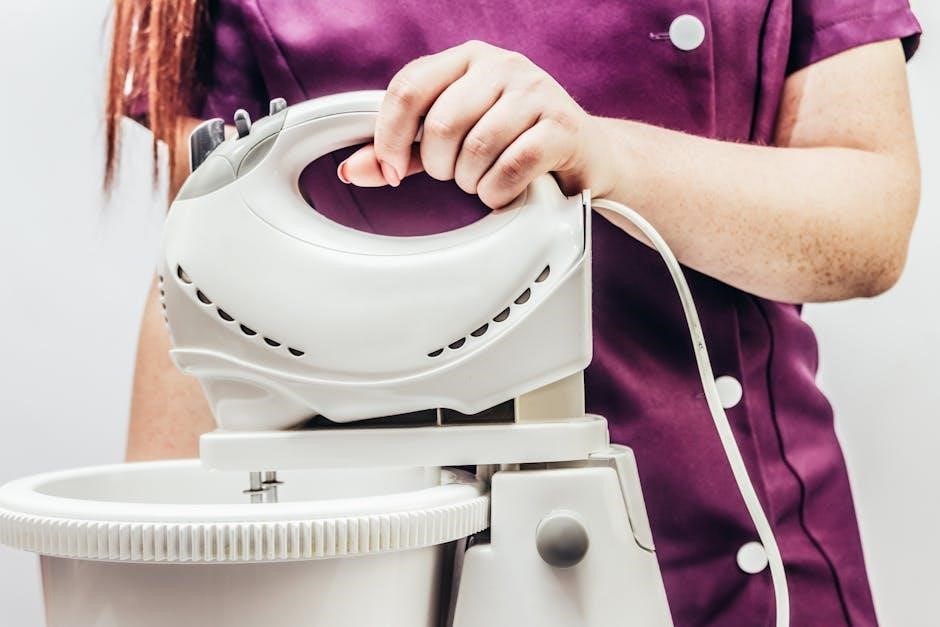Hoyer Lift Instruction Manual: A Comprehensive Guide
This comprehensive guide provides essential information for the safe and effective use of Hoyer lifts. It covers various aspects‚ including operation‚ safety precautions‚ and maintenance. This manual is designed for both caregivers and users‚ with clear instructions and diagrams.
Hoyer lifts‚ also known as patient lifts or sling lifts‚ are essential devices designed to assist individuals with limited mobility. They facilitate safe and comfortable transfers between beds‚ chairs‚ wheelchairs‚ and other locations‚ reducing the risk of injury for both patients and caregivers. These lifts are particularly valuable for individuals who cannot bear weight on their legs or require significant assistance with movement.
This instruction manual provides a comprehensive overview of Hoyer lifts‚ including their types‚ components‚ safety procedures‚ and operating instructions. Whether you are a healthcare professional‚ a caregiver‚ or a user‚ this guide will equip you with the knowledge and skills necessary to operate Hoyer lifts safely and effectively.
Understanding the proper use of Hoyer lifts is crucial for ensuring patient comfort‚ preventing accidents‚ and promoting independence. This manual serves as a valuable resource for mastering the techniques and precautions associated with Hoyer lift operation.
Types of Hoyer Lifts
Hoyer lifts come in various types‚ each designed for specific needs and settings. The two primary categories are manual (hydraulic) Hoyer lifts and powered (electric) Hoyer lifts‚ offering different operational mechanisms and features.
Manual Hoyer Lifts (Hydraulic)
Manual Hoyer lifts‚ also known as hydraulic lifts‚ utilize a hand-operated hydraulic pump to raise and lower patients. These lifts are a cost-effective option and do not require electricity‚ making them suitable for environments with limited access to power or where portability is a concern.
The operation involves manually pumping a lever to generate hydraulic pressure‚ which lifts the patient suspended in a sling. Lowering the patient is controlled by releasing the pressure gradually; While manual lifts are generally less expensive than their powered counterparts‚ they require more physical effort from the caregiver.
These lifts are designed to reduce physical exertion compared to manual lifting techniques‚ thanks to the hydraulic mechanism. They are ideal for home care settings and smaller facilities where the frequency of lifts is moderate. Regular maintenance of the hydraulic system is essential for optimal performance and safety.
Key advantages include simplicity‚ lower cost‚ and independence from electrical power. However‚ caregivers should be trained on proper operation to avoid strain or injury.
Powered Hoyer Lifts (Electric)
Powered Hoyer lifts‚ also known as electric lifts‚ use rechargeable battery packs and a push-button hand control for raising and lowering patients. These lifts are designed to minimize physical strain on caregivers‚ making them suitable for frequent use and heavier patients.
The electric motor provides a smooth and controlled lifting motion‚ enhancing patient comfort and safety. Powered lifts often come with features such as adjustable base widths to navigate through doorways and around furniture. The hand control allows for precise positioning and adjustments during the transfer process.
These lifts are ideal for hospitals‚ nursing homes‚ and home care settings where caregivers perform multiple transfers daily. Regular charging and maintenance of the battery are crucial for reliable operation. Some models also include redundant controls for emergency situations‚ ensuring patient safety.
Key advantages include reduced caregiver strain‚ enhanced patient comfort‚ and ease of use. However‚ they are generally more expensive than manual lifts and require a power source for recharging. Always refer to the manufacturer’s instructions for proper battery care and maintenance.
Key Components and Nomenclature
Understanding the key components and their nomenclature is crucial for the safe and effective operation of a Hoyer lift. The major parts include the base‚ mast‚ boom‚ cradle (or spreader bar)‚ hand control (for powered lifts)‚ hydraulic pump (for manual lifts)‚ and sling.
The base provides stability and often features adjustable legs for maneuvering around obstacles. The mast is the vertical support structure‚ while the boom extends horizontally to support the patient. The cradle‚ or spreader bar‚ is where the sling attaches‚ and it can have different configurations (e.g.‚ 2-point‚ 4-point‚ 6-point) to accommodate various sling types.
For powered lifts‚ the hand control allows the caregiver to raise and lower the patient with the push of a button. Manual lifts utilize a hydraulic pump and lever to achieve the same function. The sling is a fabric support that cradles the patient during the transfer.
Familiarizing yourself with these components and their names will help you understand operating instructions and troubleshoot potential issues. Always refer to the manufacturer’s diagram for specific model details.

Safety Precautions Before Operation
Prioritizing safety is paramount before operating any Hoyer lift. Begin by thoroughly inspecting the lift for any signs of damage‚ such as frayed cables‚ leaks in hydraulic lines (for manual lifts)‚ or loose connections; Ensure all parts are properly assembled and securely fastened.
Verify the weight capacity of the lift and never exceed it. Choose the correct sling type and size for the patient’s needs‚ ensuring it is in good condition‚ without tears or worn stitching. The sling should be appropriately rated for the patient’s weight. Familiarize yourself with the lift’s controls and emergency stop mechanism.
Before each use‚ assess the patient’s condition and ensure they are comfortable and properly positioned in the sling. Clearly communicate the lifting process to the patient to minimize anxiety and ensure their cooperation. Create a clear path‚ free from obstacles‚ for the transfer.
Lock the wheels of the bed or chair the patient is being transferred from and to. Never leave the patient unattended while they are suspended in the lift. If any doubt exists about the safety of the lift or the transfer process‚ do not proceed.
Step-by-Step Operating Instructions
This section provides a detailed guide to operating the Hoyer lift safely and effectively. Each step is outlined clearly‚ from preparing the lift to positioning the patient and performing the transfer. Follow these instructions carefully for optimal safety.
Preparing the Lift and Sling
Before initiating any patient transfer‚ ensure the Hoyer lift is in optimal working condition. Begin by verifying the lift’s battery is adequately charged if it is a powered model‚ or inspect the hydraulic cylinder for any leaks in manual versions. All lifts must share nomenclature.
Next‚ carefully examine the sling for any signs of wear and tear‚ such as fraying‚ tears‚ or loose stitching. Using damaged slings can be unsafe. Select the appropriate sling type based on the patient’s specific needs and the type of transfer required.
Ensure the sling is the correct size and weight capacity for the patient. Connect both ends of the Hoyer lift chains to the side arms‚ making sure they have the same links on each side. Read the user manual before you use the lift‚ to avoid injury.
Familiarize yourself with the lift’s controls and emergency stop mechanism. This preparation is crucial for a safe and smooth transfer process.
Positioning the Patient
Properly positioning the patient before initiating the lift is paramount for their comfort and safety. Communicate clearly with the patient throughout the process‚ explaining each step to alleviate any anxiety. Begin by ensuring the patient is lying comfortably on a supportive surface‚ such as a bed or wheelchair.
Carefully roll the patient onto their side‚ and gently slide the sling underneath them‚ ensuring it is positioned according to the sling manufacturer’s instructions. The sling should be centered to distribute weight evenly; If the patient needs support‚ raise the side rails.
Once the sling is in place‚ carefully roll the patient back onto their back‚ ensuring the sling remains properly positioned. Adjust the sling straps as needed to ensure a secure and comfortable fit. Place the patient’s arms inside the Hoyer lift chains.
Confirm that the patient feels secure and supported before proceeding with the lift. This careful positioning will minimize discomfort and potential injury.
Performing the Lift
With the patient properly positioned and the sling securely attached‚ you can now initiate the lift. Before starting‚ double-check all connections to ensure they are secure. Communicate with the patient throughout the lifting process‚ providing reassurance and clear instructions.
For manual lifts‚ use the hydraulic pump handle to slowly raise the patient. Maintain a smooth‚ controlled motion‚ avoiding any sudden jerks or movements. For powered lifts‚ use the hand control to gently elevate the patient. Monitor the patient’s comfort and stability throughout the ascent.
Once the patient is lifted to the desired height‚ carefully maneuver the lift to the destination point‚ such as a wheelchair or commode. Ensure the destination is stable and ready to receive the patient. Gently lower the patient into the new location‚ again using smooth‚ controlled movements.
Once the patient is safely positioned‚ detach the sling and ensure the patient is comfortable and secure.
Maintenance and Inspection
Regular maintenance and inspection are crucial for ensuring the safe and reliable operation of your Hoyer lift. Before each use‚ conduct a visual inspection of all components‚ including the frame‚ sling attachments‚ and lifting mechanism. Check for any signs of wear‚ damage‚ or loose connections.
Periodically‚ lubricate moving parts as recommended by the manufacturer. For manual lifts‚ inspect the hydraulic cylinder for leaks and ensure the pump operates smoothly. For powered lifts‚ check the battery charge and inspect the power cord for damage. Replace worn or damaged parts immediately.
Keep the lift clean and free of debris. Wipe down the frame and sling with a mild disinfectant after each use. Store the lift in a dry‚ safe place when not in use. Schedule professional inspections and maintenance as recommended by the manufacturer to ensure optimal performance and safety.
Proper maintenance extends the life of the lift.

Troubleshooting Common Issues
This section addresses common problems encountered while using a Hoyer lift and provides potential solutions. If the lift fails to raise or lower‚ check the battery charge (for powered lifts) or the hydraulic fluid level (for manual lifts). Ensure all connections are secure and the sling is properly attached.
If the lift makes unusual noises‚ inspect moving parts for obstructions or damage. Lubricate as needed. If the patient feels unstable during the lift‚ ensure the sling is correctly positioned and the lift is balanced. Double-check the weight capacity of the lift and sling to ensure it is not exceeded.
If the lift continues to malfunction‚ consult the manufacturer’s manual or contact a qualified service technician. Do not attempt to repair the lift yourself unless you are trained and authorized to do so. Using incorrect parts can lead to serious injury.
Always prioritize safety when troubleshooting.

Emergency Procedures
In the event of an emergency during a Hoyer lift operation‚ immediate action is crucial. If the lift malfunctions mid-transfer‚ assess the patient’s condition first. Ensure the patient is stable and secure within the sling. If possible‚ manually lower the patient to a safe surface using the emergency lowering mechanism (if available on your model).
For powered lifts‚ locate and activate the emergency stop button to immediately halt all movement. If the lift becomes unstable‚ gently guide the patient towards a stable surface‚ avoiding sudden movements that could cause injury. Call for assistance from another caregiver or emergency medical personnel if needed.
After the immediate emergency is resolved‚ thoroughly inspect the lift for any damage or malfunctions. Report the incident to the appropriate personnel and do not use the lift again until it has been inspected and repaired by a qualified technician. Review the incident to prevent recurrence.

Hoyer Sling Types and Selection
Selecting the correct sling is paramount for patient safety and comfort during Hoyer lift transfers. Various sling types cater to different patient needs and physical conditions. Full-body slings offer maximum support and are suitable for patients with limited mobility or those who require complete assistance. U-shaped slings provide support while allowing for toileting and hygiene tasks.
Hygiene slings are designed with an open seat for easy access during personal care. Stand-assist slings are used for patients who have some weight-bearing ability and require assistance to stand. Consider factors such as patient weight‚ size‚ and level of mobility when choosing a sling. Always refer to the sling’s weight capacity and ensure it is compatible with the Hoyer lift being used.
Regularly inspect slings for wear and tear‚ replacing them as needed to maintain safety. Polyester slings are known for their durability and comfort and can be washed frequently.
